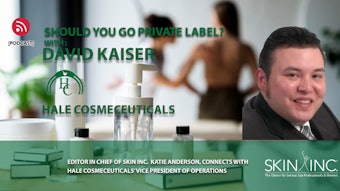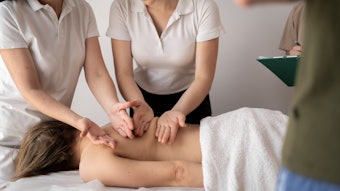
If you’re like most spa owners, you probably view each dollar as being the same as every other one. In truth, there are two kinds: before-tax and after-tax. After-tax dollars are real dollars; when you go to spend them, each and every one is worth 100 cents. Before-tax dollars are something quite different. Although they may appear to be the same on paper, a before-tax dollar is something of an illusion. It’s worth less than 100 cents. How much less depends upon your tax bracket and how well you do your homework.
Slash your taxes
So how do you go about maximizing those valuable after-tax dollars? By taking advantage of every legitimate way to slash your income taxes. The best way to do this is to avoid last-minute attempts to make up for your failure to plan early. The best time to reduce your 2006 income taxes—and those of every subsequent year—to a minimum is right now. Here’s how.
Organize your records. If you scramble every April, looking for receipts and other tax documents to pass along to your accountant, you’re probably missing some healthy deductions. So start out right by organizing your records well before tax time. Set up separate manila folders for expense and income records, and file them as they accumulate. You will make your accountant’s job much easier—and make your bill much lower—next April.
Maximize your tax-deferred retirement account early. “Don’t wait until tax-filing time to fund your retirement account,” advises certified public accountant (CPA) Carol I. Katz, of Baltimore. “If you have the cash available, making the maximum allowable deposits into your 401(k) or IRA account as early in the year as possible not only will reduce your tax load, but it also will add months to the tax-deferred compounding of your investment.”
If you haven’t set up a retirement account yet, now is the time to take action. “The latest increases in allowed contributions to pension plans offer important tax advantages,” explains Katz. “For example, 401(k) annual allowable contributions for 2006 are $15,000, with an extra $5,000 allowed if an individual is age 55 or older. This means that a working couple whose employers each offer 401(k) plans—even if the employer is their own corporation—can deduct $28,000 pretax, or $36,000 if both are 55.”
Of course, not everyone is in a position to make the maximum contribution, but making the highest one that your finances will permit is a wise move when considering both taxes and investments.
Take advantage of the Jobs and Growth Tax Relief Reconciliation Act (JGTRRA) of 2003. The JGTRRA lowered marginal federal tax rates across the board. Among the changes that may affect you are a reduction in the tax rate on qualified dividend income and long-term capital gains from 20–15%. With tax rates on this type of income at a much lower amount than ordinary, now is the time to examine your investment portfolio in order to identify whether you should take some capital gains at the lower tax rate. “If you plan to buy any stocks this year, it may be best to invest in quality dividend-paying stocks in order to take advantage of the 15% tax rate on dividends,” notes Katz.
Take full advantage of Section 179. “One of the most important tax-savings possibilities opened up by the JGTRRA is the Section 179 deduction,” explains CPA Cheryl Pimlott, of Roseland, New Jersey. “This provision allows you to deduct the full cost of capital assets in the year of purchase, up to a defined limit.”
“If you are planning to purchase any equipment or other assets in 2007, you may want to purchase them this year,” says Navin Sethi, senior tax manager at Rothstein Kass in Walnut Creek, California. “Each year, the tax law allows you to purchase qualifying property, which you may expense immediately, rather than allowing it to depreciate over time. The maximum for this immediate deduction is $108,000 for 2006. The ability to expense your costs also applies to certain sport utility vehicles, trucks and vans, but generally is limited to $25,000.”
Start searching now for those tax-reducing deductions that you may have missed last year. “Small-business owners often miss out on important tax deductions by waiting until the last minute,” says Paul Rich, CPA at the Siegel Rich division of Rothstein Kass in Roseland, New Jersey. “Among the tax benefits that are easy to overlook are tax credits on both federal and state tax returns. For example, a federal tax credit now can be claimed by eligible small businesses for pension plan start-up costs. This credit is designed to encourage businesses with fewer than 100 employees to establish and maintain retirement savings accounts for their employees. The credit equals 50% of the start-up costs incurred to create or maintain a new retirement plan.”
The pension plan tax credit is limited to $500 in any tax year. You may claim it for qualified costs incurred in each of three years, beginning with the tax year in which your plan becomes effective. You must use IRS Form 8881 to set up a new retirement plan. The procedure is rather complex, so it’s important to consult with your tax adviser before proceeding.
Deductions for travel, meals and entertainment also are among the often-missed tax-relief possibilities. “Most businesspeople do not keep adequate documentation for these expenses,” states Rich. “As a result, they lose out on deductions that could provide significant tax relief.”
Documentation for travel and entertainment expenses incurred during the year should include a description of the business purpose, as well as where and when you traveled or entertained. In the case of entertainment—such as a lunch or dinner, for example—your record should include the name of the person or persons entertained, as well as the nature of the business discussion. You should keep receipts for any travel/entertainment expense that are more than $25.
Put the kids to work. Do you have children? Are you giving them an allowance? By putting your children to work in your spa, you convert their personal allowances into deductible compensation. Wait … it gets better. If your kids are 18 years of age or younger and work for your unincorporated business, you don’t have to pay any Social Security or Medicare taxes on their earnings. “You can pay them $4,000 and then make Roth IRA contributions for them in the same amount,” explains CPA Robert S. Seltzer, of Beverly Hills, California. Because you are giving the children an allowance anyway, putting them to work in your business to perform even the simplest of chores allows Uncle Sam to help fund that expense.
Will you use your car for business this year? Whether you use your car for business regularly or only on rare occasions, you are entitled to deduct the costs of maintenance and operation when it is used for work-related purposes. There are two ways to calculate your auto expense deduction—either actual expenses or the standard mileage rate. Katz advises that you or your accountant figure out your auto deduction both ways, and then utilize the method that gives you the largest break.
When you calculate your deduction using actual expenses, you may include the business portion of all car-operating expenses, including depreciation, gas and oil, insurance, licenses, parking and registration fees, repairs, tires, tolls, and even garage rent. If you decide to use the easier standard mileage rate, keep in mind that the 2006 deduction was a flat 44.5 cents per business mile—the highest ever.
Combine pleasure trips with a bit of business. If you are planning any pleasure trips before the end of the year, consider the possibility of adding in some business. Can you visit a spa owner during your vacation to discuss management techniques? Any activity involving an attempt to improve your business skills should qualify for a partial deduction of your travel expenses.
If more than half of your time is devoted to business, you may deduct transportation costs, as well as all directly business-related expenses. However, if more than 50% of your time will be spent on pleasure, you cannot deduct the cost of transportation. If the trip is entirely for work-related purposes, such as attendance at a convention, all expenses may be chalked up to business.
Will you make charitable contributions in 2006? If you plan to make charitable contributions this year, consider donating long-term appreciated securities instead of cash. That way, you’ll receive a full fair market value deduction and pay no capital gains tax on the securities. Or sell depreciated securities for the tax loss, and give the cash to charity.
Consider prepaying expenses. As a spa owner, you probably use the cash method of accounting. According to Sethi, “Under the cash method, a business recognizes income only when it constructively receives the payment. Expenses are deductible only after you make the actual payment. One way to take advantage of this is to prepay in December any expenses due in January. This will increase your deductions for this year. For example, if your rent is due at the beginning of the month, date and mail the check for January rent several days before the end of the year.”
The most profitable investment
Maximizing your after-tax dollars requires a little early planning and effort on your part, but the time you spend chipping away at your income taxes may be the most profitable investment you’ll make this year.










